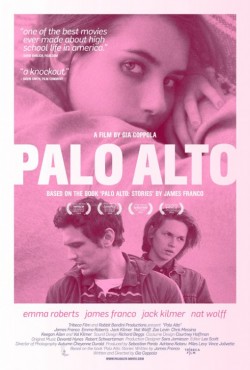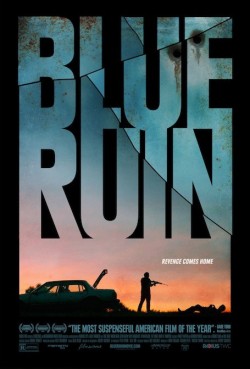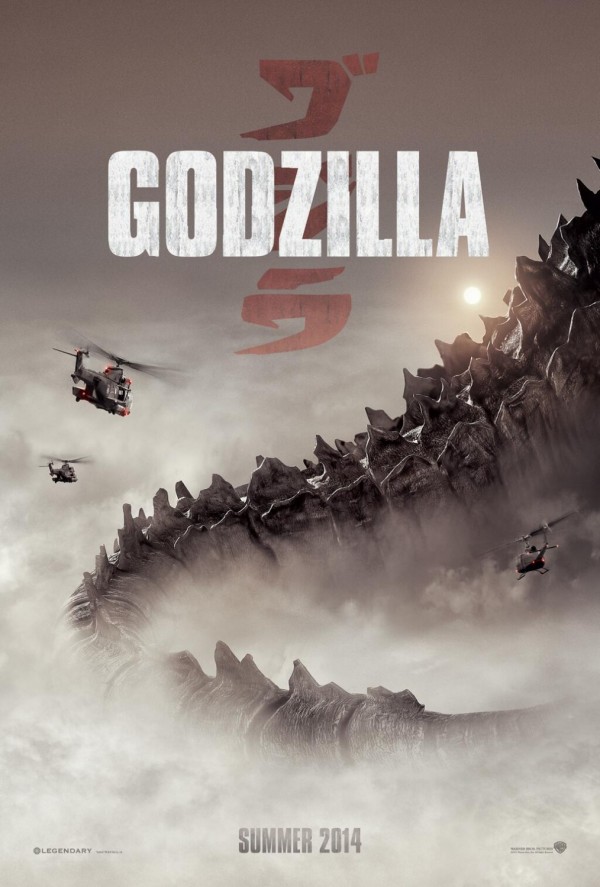GODZILLA (2014, directed by Gareth Edwards, 123 minutes, U.S.)
PALO ALTO (2013, directed by Gia Coppola, 100 minutes, U.S.)
BLUE RUIN (2013, directed by Jeremy Salnier, 90 minutes, U.S.)
 BY DAN BUSKIRK FILM CRITIC There has been bad news from Southern California in recent days. San Diego County has been hit with wildfires of a strength we’re not used to seeing so early in the fire season and don’t even get me started on the ‘firenadoes.’ Disturbing foreshadowing is also coming out of Hollywood, too, because badly misfiring summer blockbusters like Godzilla rarely arrive this early in the season either. If this is the bungled slop they’re serving in May, what will August’s film menu look like?
BY DAN BUSKIRK FILM CRITIC There has been bad news from Southern California in recent days. San Diego County has been hit with wildfires of a strength we’re not used to seeing so early in the fire season and don’t even get me started on the ‘firenadoes.’ Disturbing foreshadowing is also coming out of Hollywood, too, because badly misfiring summer blockbusters like Godzilla rarely arrive this early in the season either. If this is the bungled slop they’re serving in May, what will August’s film menu look like?
The auteurist in me would like to blame director Gareth Edwards, whose only other feature credit is a post-modern giant monster movie that cost less than a million dollars, but his shoulders aren’t big enough to carry all the blame. Where most of the over-produced blockbusters have a bevy of writers, Godzilla only has two to blame: Max Borenstein, who has no other major writing credits behind him, and Dave Calaham, the writer behind the ludicrous Expendables franchise. But no, the blame goes deeper than that. A film as poorly-conceived as Godzilla has problems that point to the dunderheaded producers who conceived this disaster. There are eight producers to blame and somewhere between them all good ideas and inspiration got lost.
Their re-write of Godzilla’s origin is at least somewhat amusing. Here the monster lives not in the ocean but somewhere in the Earth’s crust, where he thrives on the radiation emitted from its core. Turns out the nuclear bomb tests of the 1950s weren’t actually experiments, they were attempts to blast the creature to smithereens. A Fukishima-like meltdown in Japan was secretly caused by giant insect-type monsters who emerge from the earth. Godzilla’s release is encouraged because a scientist (Ken Watanabe, like everyone in this film, an actor who deserves better) has some gut belief that the monster will “restore nature’s balance” and kill these creatures. By the film’s end that’s exactly what happens.
But being predictable is only part of the new Godzilla’s problems. The film’s script seems to have excised any situation that hasn’t been seen in at least ten blockbusters from the last decade, and who thought it was a good idea to keep Godzilla off-screen for over half the film? Instead, our time is spent with the badly-bewigged Joe Brody (Bryan Cranston) and his colorless son Ford (Aaron Taylor-Johnson of Kick-Ass) as they warn everyone in earshot that something should be done in scene after endless scene. Usually these type of blockbusters are too intent on giving audiences what they think they want, but it is unfathomable to imagine who would be pleased by the film’s endless hand-wringing in the first hour.
Ultimately the cast doesn’t matter one bit, partially because nothing humans do affects the creatures anyway. In the second half we find Ford and his family as they join the screaming masses in San Francisco trying not to be crushed with the rest of the crowd. At least this latest edition of Godzilla does one better than the 1998 reboot by giving the creature another monster to fight and restoring the title character to “Good Guy” status. His foes, a pair of shrieking buggers who are hot to mate, resemble the insectoid monsters from Starship Troopers and they do their part to inflict some 9-11 influenced destruction to the city.
Dare I say Hollywood has been flying the “9-11, Never Forget” banner for too long now? For over a dozen years, Hollywood has been using its computer-generated powers to destroy skylines, trading on the gut-reactions of seeing another 9-11 disaster take place. When will someone decide that we’ve gone to that well too many times? Among the trailers preceding Godzilla was another world-ending disaster film which roared like a typhoon and after it was done the packed audience sat in stone silence like a big stifled yawn. That was the same sound they made at the end of Godzilla, before a big collective groan rang out. How did the goofy charm of the original Godzilla films get turned into the witless, humorless bombast of this tired, fake event film? The studios should devote a team of scientists to stomp out that danger and just let these sleeping monsters lie.
– – – – – – – – –
The Coppolae are launching a third generation to their franchise. Her name is Gia Coppola and she’s a bit like Sophia, but with a little less “there” there. Her inaugural offering is a teen film called  Palo Alto, based on the short stories of James Franco (I kid you not) and it is a pleasant trifle.
Palo Alto, based on the short stories of James Franco (I kid you not) and it is a pleasant trifle.
Like some of the youth drama of Gus Van Sant (without the bite), Palo Alto follows a group of teenagers through their adolescent dramas. Front and center are Teddy (newcomer Jack Kilmer) and the sweet April (Emma Roberts, daughter of actor Eric Roberts and niece of movie star Julia Roberts) a good-looking pair of kids who are a little adrift. Jack is prone to being pulled into mild delinquency by his loose-cannon friend Fred (Nat Wolff) and April is lured into an affair with hockey coach “Mr. B.” (James Franco, who has apparently had trouble shaking this role as of late). Will they be able to escape their teen years unscathed? That is Coppola’s burning question.
There is a lot of talent on screen. Roberts in particular offers up a smörgåsbord of awkward facial twitches to color her inarticulate fumbling, and the rest of the cast achieves a naturalism that adds an air of reality to the piece. Thumbs up as well for newcomer cinematographer Autumn Durald, who does dreamy work in a profession almost exclusively dominated by men.
It all unfolds painlessly, perhaps reminding us of our own high school experiences, but once it is over what are we left with? Tragedies are averted and dangers subside before becoming too dramatic and life in the fuzzy cloud of Palo Alto is looking up. With Palo Alto, Coppola has shown us she can make a pretty package but if she has anything to say it is hard to spot in her debut.
– – – – – – – – – –
 But if Hollywood and its family dynasties have let us down, all is not lost. I caught director Jeremy Saulnier’s Blue Ruin on its brief Philly run (it still is available On-Demand) and it is the kind of low-budget unpredictable thriller that makes your basic Hollywood offerings look as tired and ill-conceived as they are.
But if Hollywood and its family dynasties have let us down, all is not lost. I caught director Jeremy Saulnier’s Blue Ruin on its brief Philly run (it still is available On-Demand) and it is the kind of low-budget unpredictable thriller that makes your basic Hollywood offerings look as tired and ill-conceived as they are.
The story centers around Dwight (Macon Blair) a bearded homeless man who wanders unnoticed on the periphery of the world. One day a cop recognizes him and pulls him in to the station to tell him a convict is being released from jail. Without explanation, Dwight shaves his beard, buys a car battery and a gun and drives his beat-up junker to the prison gates in time to see the release.
Dwight spends much of his time alone in the film and Saulnier keeps us engaged as we put together the pieces of the past. Even when the past is revealed, questions linger and we’re unsure how to feel about Dwight’s desire for revenge. Set mainly in Virgina, there’s a veiled critique of our gun culture and a romance with firearms at least partially to blame for the spiraling violence. A gun nut friend recruited to help Dwight sets him straight, “I’m not helping you because I think it is right. This is some ugly shit.”
Blue Ruin‘s plot might sound like run-of-the-mill cinematic mayhem but it achieves a unique power by setting the action in a world that looks recognizably like our own, full of less-than-beautiful people & places and the narrative is driven by uncomfortably believable emotions. I’m reminded of the Coen Brothers pulling off a similar trick with their debut, Blood Simple. Hollywood has pushed a talent like Saulnier to its periphery but Blue Ruin shows the sort of vision and excitement that more U.S. features would do well to co-opt.

